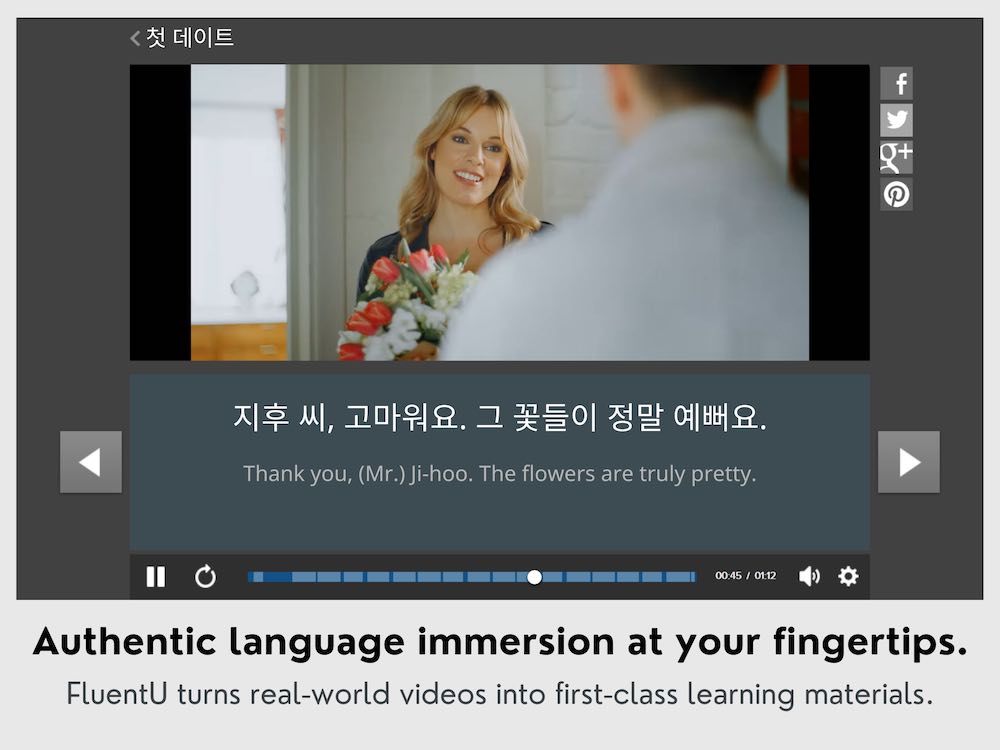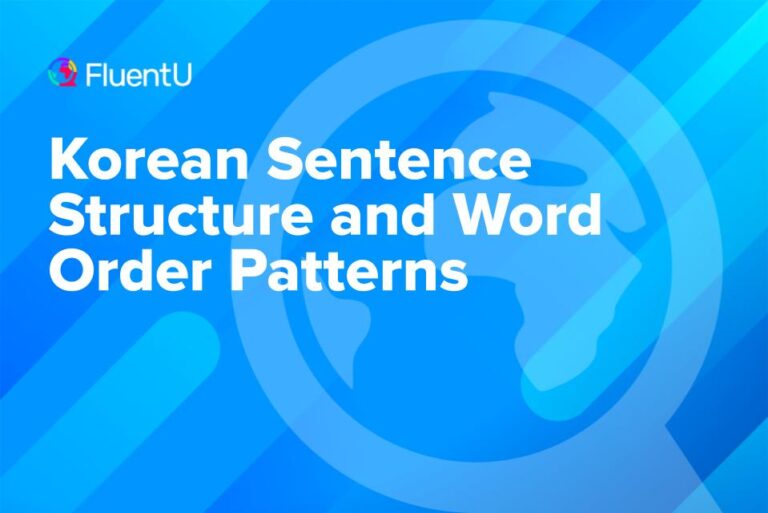6 Most Common Types of Korean Particles
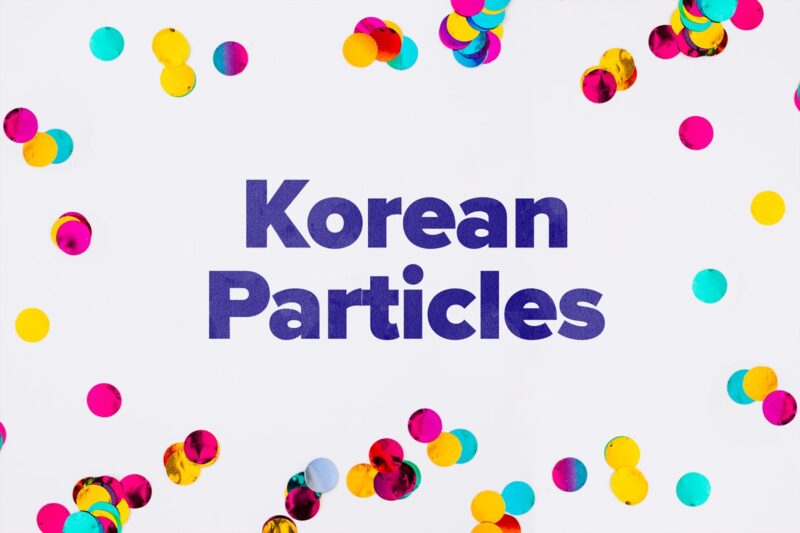
Korean particles may be small, but the topic is a rather big one—particles act as tags or labels suffixed to nouns to help you understand what that noun is all about.
So Korean particles can tell you, “This noun is the subject of the sentence,” “This noun is related to that noun over there” and many other things. Let me break down the most common and useful Korean particles.
Download: This blog post is available as a convenient and portable PDF that you can take anywhere. Click here to get a copy. (Download)
The Most Common Korean Particles
| Type of Particle | Korean Particle(s) |
|---|---|
| Topic | 은
는 |
| Subject | 이
가 |
| Object | 을
를 |
| Linking | 와
과 랑 이랑 하고 |
| Plural | 들 |
| Possessive | 의 |
1. Korean Topic Particles: 은 and 는
A topic particle tells everyone what’s being talked about. Any noun followed by 은 (eun) or 는 (neun) is being emphasized and elevated as the topic of conversation.
은 and 는 are the same.
은 is used if the noun preceding it ends in a consonant, and 는 is used for nouns that end in a vowel. This is for ease of pronunciation. Don’t believe me? Try switching the rules!
For example, 책 (chaeg), which means “book,” and 집 (jip), which means “house,” both end in consonants, so we use 은 for them:
책은 무겁다.
(Chaeg-eun mu-geob-dda.)
The book is heavy.
집은 크다.
(Jib-eun keu-da.)
The house is big.
On the other hand, 저 (jeo), the polite form of the Korean “I,” ends with the vowel ㅓ(eo). So, we use 는 with it.
When you want to talk about yourself, you say 저는 (Jeo-neun), which means “I am.”
저는 미국인이에요.
(Jeo-neun mi-gu-gi-ni-e-yo.)
I’m American.
저는 한국말을 못 합니다.
(Jeo-neun han-gung-ma-reul mo-tam-ni-da.)
I don’t speak Korean.
저는 스물네 살입니다.
(Jeo-neun seu-mul-ne sal-im-ni-da.)
I’m 24 years old.
Again, marking the noun with 은 or 는 serves to highlight the topic of the conversation.
So, in the above examples, when you’re saying that you’re American or 24 years old, you’re elevating yourself to the topic of conversation. When somebody else introduces a noun with the topic marker, it changes the conversation’s focus.
Another thing to know is that the topic marker implies a contrast.
In the above example, when you say 집은 크다 (Jib-eun keu-da), which means “the house is big,” you’re contrasting the house to other things. You’re implying that the house is big and that other things aren’t big.
So, besides the actual statement, the topic marker also conveys an unspoken contrast.
2. Korean Subject Particles: 이 and 가
Another very important Korean particle is one that helps us identify the subject of the sentence.
Here, the subject is often in relation to the verb or adjective. The marker helps answer the following questions:
- Who is the doer of the action?
- Who/what is being described?
The subject particle is either 이 (i) or 가 (ga). They’re basically the same thing.
We use 이 when the preceding noun ends in a consonant and 가 when the noun ends in a vowel.
So, we use 가 after a noun like 날씨 (nal-ssi), which means “weather,” because it ends in a vowel. And we use 이 for nouns like 가방 (ga-bang), which means “bag” and ends with a consonant.
For example:
날씨가 좋다.
(Nal-ssi-ga jo-ta.)
The weather is nice.
가방이 낡았다.
(Ga-bang-i nal-ga-dda.)
The bag is old.
As you can see, the subject particle marks the noun that acts as the subject of the sentence.
이 and 가 are also used when you want to say that you have something. For example, if you want to say that you have a ball or a dog, you’d say:
저는 공이 있어요.
(Jeo-neun gong-i-i-ssuh-yo.)
I have a ball.
저는 개가 있어요.
(Jeo-neun gae-ga i-ssuh-yo.)
I have a dog.
이 or 가 immediately follows the thing that you have.
We’ve already talked about how topic particles imply a contrast while a subject particle doesn’t. They also differ in where they direct the focus of the sentence.
For example:
나는 파리를 죽였다.
(Na-neun pa-ri-reul ju-gyuh-dda.)
I killed the fly.
내가 파리를 죽였다.
(Nae-ga pa-ri-reul ju-gyuh-dda.)
I killed the fly.
Both sentences generally mean the same thing. But in the first one, with the topic particle, the focus is on the verb. So, the emphasis is on the action. (What did I do? I killed the fly.)
In the second sentence, the spotlight is on the subject. (Who did it? Who killed the fly? It was me! I did it! I killed the fly.) The focus and emphasis in this sentence are on the subject of who did the killing.
The best way to get a handle on topic and subject particles is to learn their uses “in vivo.” That is, in the natural context of a conversation (or many, many conversations). The circumstances will often be your guide to which particle to use.
Learners should listen to how native speakers use these particles and, along with the immediate context, notice patterns of usage.
If you don’t have access to a large local Korean community, you can listen to the language in use through authentic content, like the type that you’ll find on FluentU.
FluentU takes authentic videos—like music videos, movie trailers, news and inspiring talks—and turns them into personalized language learning lessons.
You can try FluentU for free for 2 weeks. Check out the website or download the iOS app or Android app.
P.S. Click here to take advantage of our current sale! (Expires at the end of this month.)
Listening to native speakers is important when learning when to use particles and when not to use them.
For example, when no emphasis is needed, native speakers simply skip using these particles. Often, they even skip mentioning the subject altogether. They simply use context to understand these things instead.
3. Korean Object Particles: 을 and 를
The name gives it away: These particles tag the object of the sentence.
In Korean, sentences follow the S-O-V (Subject-Object-Verb) pattern, which means you’ll find the object before the verb.
You use either 을 (eul) or 를 (leul) to tag the object.
Use 을 when the preceding noun ends in a consonant, and use 를 if the preceding noun ends in a vowel.
For example:
나는 김치를 먹었다.
(Na-neun gim-chi-leul muh-guh-dda.)
I ate kimchi.
그녀는 물을 마신다.
(Geu-nyeo-neun mul-eul ma-sin-da.)
She drinks water.
저는 개를 봤어요.
(Jeo-neun gae-leul bwa-ssuh-yo.)
I saw a dog.
4. Korean Linking Particles: 와, 과, 랑, 이랑 and 하고
The next particles are equivalent to the English “and.”
They’re used to indicate the grouping or pairing of nouns. For example:
apples and oranges
salt and pepper
dogs, cats and birds
There are several particles that can do the trick: 와 (wa), 과 (gwa), 랑 (rang), 이랑 (i-rang) and 하고 (ha-go).
와 and 과 work well with speeches, presentations and written forms while 랑, 이랑 and 하고 are used in daily conversation.
와 is used when the preceding noun ends in a vowel. 과 is used when the preceding noun ends in a consonant.
For the other pair, 랑 is used when the preceding noun ends in a vowel, and 이랑 is used when the noun ends in a consonant.
하고 can be used freely with both vowels and consonants.
For example:
사과와 오렌지
(Sa-gwa-wa o-len-ji)
Apples and oranges
소금과 후추
(So-geum-gwa hu-chu)
Salt and pepper
개, 고양이하고 새
(Gae, go-yang-i-ha-go sae)
Dogs, cats and birds
The particles can also be used like the English “with,” such as when you want to do something with someone:
오늘 동찬이랑 놀거야.
(O-neul dong-chan-i-lang nol-guh-ya.)
I’m going to play with Dongchan today.
난 친구랑 영화보는 걸 좋아해.
(Nan chin-gu-rang yeong-hwa-bo-neun-geol jo-a-hae.)
I like to watch movies with friends.
5. Korean Plural Particle: 들
To make things plural in Korean, we add 들 (deul) after the noun. Simple, right?
However, making nouns plural is really not as common in Korean as it is in English. Korean doesn’t really make a difference between singular and plural nouns.
So, a sentence like 나는 펜을 샀다 (Na-neun pen-eul sa-dda) can mean “I bought a pen” or “I bought pens.”
Native speakers have no problem with this because context is often enough to inform the listener whether the noun is singular or plural.
You use 들 when you want to erase any ambiguity in your statement or when you want to emphasize that there’s more than one thing.
And even then, 들 is really only used for people or living things—it’s rarely used for objects.
Here are some examples:
사람 (sa-ram) — person → 사람들 (sa-ram-deul) — people
학생 (hag-saeng) — student → 학생들 (hag-saeng-deul) — students
학생들은 집에 갔다.
(Hag-saeng-deul-eun ji-be ga-dda.)
The students went home.
6. Korean Possessive Particle: 의
This last one is the equivalent of the English apostrophe + s and is about expressing ownership or possession.
의 (ui) moderates the relationship between two nouns and is found between them.
The order of the nouns is crucial. The first noun is the owner, and the second noun—the one following 의—is the thing owned.
Let’s look at the example 형의 차 (hyeong-ui cha). 형 means “older brother” and 차 means “car.” So, it means “older brother’s car.”
Here are some more examples:
오늘의 게임
(Oneul-ui ge-im)
Today’s game
메리의 머리카락
(Me-li-ui muh-li-ka-lag)
Mary’s hair
우리 아버지의 친구가 왔다.
(U-li a-buh-ji-ui chin-gu-ga wa-dda.)
My father’s friend came.
In speech, 의 is often pronounced as 에 (e).
With pronouns like 나 (na) and 저(jeo), which both mean “I” or “me,” and 너 (neo), which means “you,” adding 의 to get the possessive forms “my” and “your” results in a contraction:
나의 becomes 내 (nae) — my
저의 becomes 제 (je) — my
너의 becomes 네 (ne) — your
Here are some more examples:
오늘은 내 생일이야.
(O-neul-eun nae saeng-il-i-ya.)
Today is my birthday.
네 생일은 언제야?
(Ne saeng-il-eun eon-je-ya?)
When is your birthday?
So, you now have a couple of the most common Korean particles under your belt. You know the topic, subject, object, linking, plural and possessive particles in Korean sentences.
You’re well on your way to mastering Korean grammar!
Download: This blog post is available as a convenient and portable PDF that you can take anywhere. Click here to get a copy. (Download)
And One More Thing...
If you enjoyed this post, you're already halfway to having the time of your life learning Korean with FluentU!
FluentU makes it possible to learn with K-pop videos, funny commercials, entertaining web series and more. Just a quick look will give you an idea of the variety of FluentU videos on offer:

FluentU really takes the grunt work out of learning languages, leaving you with nothing but engaging, effective and efficient learning. It's already hand-picked the best videos for you (which are organized by level and topic), so all you have to do is simply choose any video that strikes your fancy to get started.
Each word in the interactive captions comes with a definition, audio, image, example sentences and more.

Access a complete interactive transcript of every video under the Dialogue tab, and easily review words and phrases from the video under Vocab.
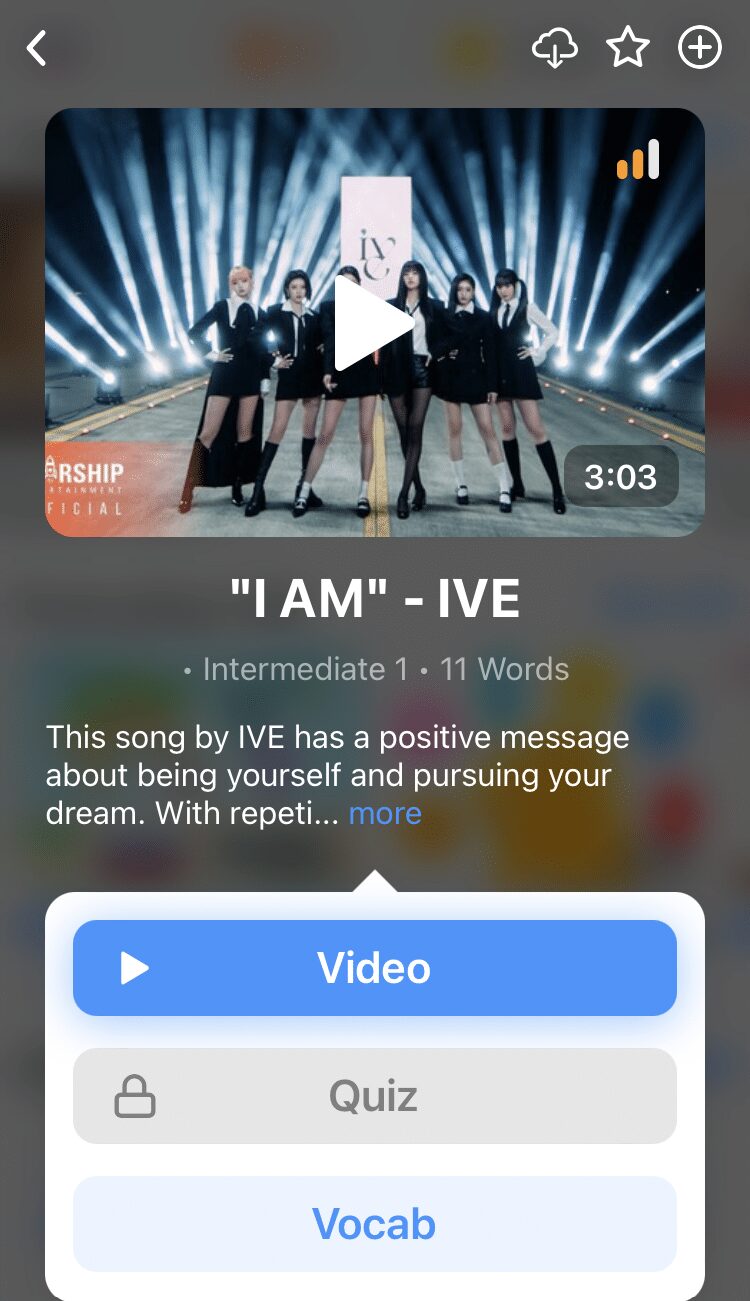
You can use FluentU’s unique Quiz Mode to learn the vocabulary and phrases from the video through fun questions.
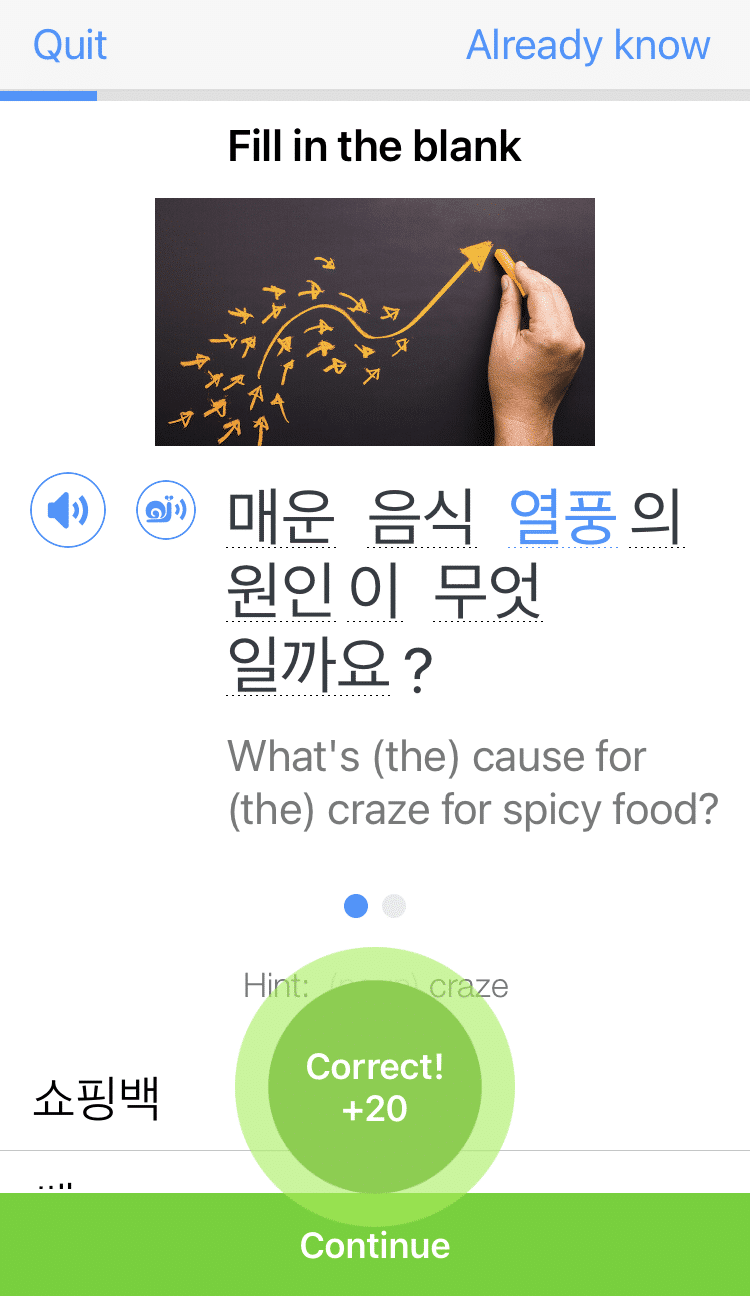
FluentU keeps track of what you're learning, and tells you exactly when it's time for review, giving you a 100% personalized experience.
Review sessions use video context to help embed the words in your memory.
Start using the FluentU website on your computer or tablet or, better yet, download the FluentU app from the iTunes or Google Play store. Click here to take advantage of our current sale! (Expires at the end of this month.)
